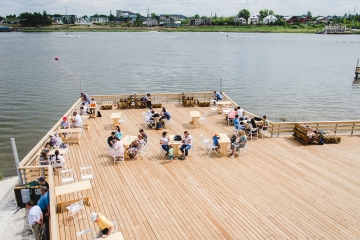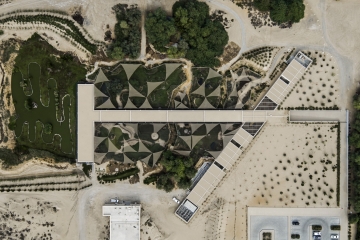2019 Cycle
Project Finder

Alioune Diop University was founded in 2007 as part of the Senegalese government’s efforts to decentralise higher-education provision, seeking both to encourage youth to stay in rural areas and to provide educational programmes appropriate to these contexts. By 2012 it was functioning beyond capacity, so an extension project was launched, of which this building formed the major part.

After four decades of teaching in United Kingdom, Razia Alam returned to her home country of Bangladesh where she established a school for underprivileged children, using her pension funds.
When the lease on the existing premises of this school expired, its founder sought out a site on which to build. The budget restricted her choice to areas not well suited for development. Wanting the school to be near water, she purchased a riverside plot which, it turned out, is submerged in up to 3m of monsoon water for a third of the year.

Built to celebrate Palestinian heritage and with a stated aim to ‘foster a culture of dialogue and tolerance’, the museum is a flagship project of Palestine’s largest NGO, with support from nearby Birzeit University.

Tatarstan’s Soviet period, beginning in 1920’s, saw much modernist construction and hierarchical centralised planning, with diverse urban locations made to look alike. Many mosques and churches were destroyed, leaving their associated public spaces functionless. The post-Soviet era, since the Republic of Tatarstan’s foundation in 1992, brought freedom of movement and an exodus from rural towns.

The pearling industry was historically crucial to Bahrain’s economy, with the former capital Muharraq as its global centre. Following the development of cultured pearls in the 1930s, the town went into decline and Manama rose to become capital through oil wealth. Muharraq’s indigenous population was largely replaced by migrant workers, mostly single males sharing rented accommodation.

Part of a much larger initiative by Sharjah’s Environment and Protected Areas Agency to clean up and rehabilitate this ancient chain of wetlands along the Persian Gulf coast, the Wasit Wetland Centre aims to supply information and education about this unique environment and to encourage its preservation.








